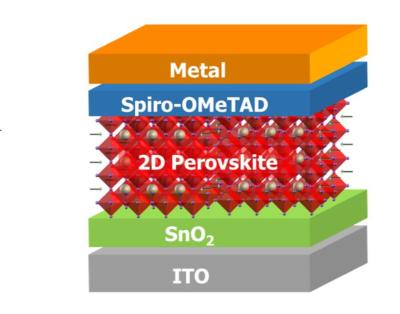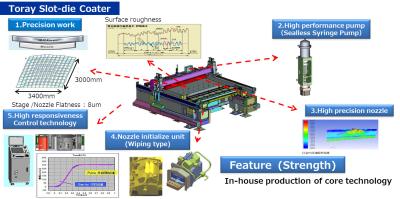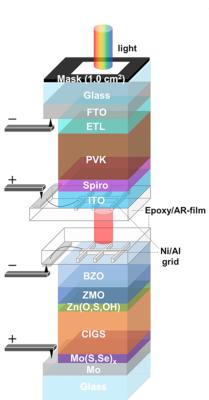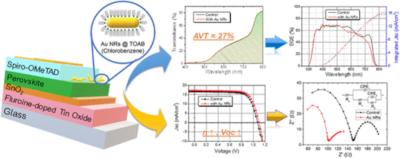Researchers design stable and efficient 4T silicon-perovskite PV cell with transparent contact
Researchers at the Indian Institute of Technology Bombay have reported NIR-transparent perovskite solar cells (PSCs) with the stable triple cation perovskite as the photo-absorber and subsequent integration with a Si solar cell in a 4T tandem device. The scientists said that the cell provides outstanding stability in the dark, as well as continuous heating conditions.
The top perovskite cell incorporates a room-temperature sputtered transparent conducting electrode (TCE) as a rear electrode. It has an n–i–p structure and utilizes an anti-reflecting coating, an electron transport layer (ETL) made of tin(IV) oxide (SnO2), a perovskite layer, a molybdenum oxide (MoOx) layer, and a spiro-OMeTAD hole transport layer (HTL). The MoOx buffer layer protects the perovskite photo-absorber and charge transport layers from any sputter damage.





